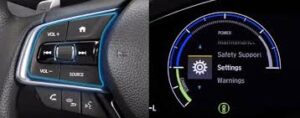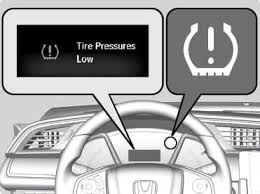Blog
How to Replace a Dead TPMS Sensor in Your Tires
How to Replace a Dead TPMS Sensor in Your Tires
A Tire Pressure Monitoring System (TPMS) sensor is crucial for vehicle safety, alerting you when your tire pressure is too low or too high. Over time, however, these sensors can fail due to battery depletion or other issues, leaving you without this vital safety feature. If you’re experiencing a TPMS warning light that won’t turn off, it might be due to a dead sensor. In this article, we’ll guide you through the process of replacing a dead TPMS sensor in your tires, so you can get back on the road safely and efficiently.
Why Do TPMS Sensors Fail?
Before diving into the replacement process, it’s important to understand why your TPMS sensor may have stopped working. Some common reasons for sensor failure include:
- Battery Depletion: TPMS sensors typically come with a built-in battery that lasts around 5–10 years. Once the battery dies, the sensor can no longer transmit tire pressure data to your vehicle’s computer.
- Physical Damage: The sensor may become damaged due to road hazards, accidents, or improper tire mounting.
- Corrosion: The sensor can corrode due to exposure to moisture, salt, or harsh weather conditions.
- Software Issues: Occasionally, a malfunctioning vehicle computer or issues with the TPMS system’s software can cause a sensor to stop working properly.
Signs You Need to Replace a Dead TPMS Sensor
There are several signs that indicate a dead or malfunctioning TPMS sensor:
- TPMS warning light: If your dashboard light stays illuminated, it could signal a problem with one or more sensors.
- Flashing TPMS light: This often indicates a sensor failure or communication issue.
- Incorrect readings: If your TPMS is giving inconsistent or inaccurate readings, it could be a sign that the sensor is failing.
- Manually checking tire pressure: If your tire pressures are all within the recommended range but the TPMS light remains on, it’s likely the sensor itself that’s faulty.
Tools and Materials Needed
Before starting the replacement, ensure you have the following tools and materials:
- Replacement TPMS Sensors: These are specific to your vehicle’s make and model. Always check the compatibility before purchasing.
- TPMS Sensor Programming Tool: This tool is used to program the new sensor to your vehicle’s computer.
- Tire Jack: To lift the vehicle for easy access to the tires.
- Tire Removal Tool: You may need this to remove the tire from the wheel.
- Valve Core Tool: This tool helps to remove and replace the valve stem core.
- Torque Wrench: To tighten the new sensor properly and ensure safety.

Steps to Replace a Dead TPMS Sensor
Step 1: Identify the Faulty TPMS Sensor
Start by confirming which sensor is faulty. If you have a direct TPMS system, you can use a TPMS diagnostic tool to check which tire has a malfunctioning sensor. If your vehicle doesn’t have a diagnostic tool, you may need to have a professional mechanic scan the system for you.
Step 2: Jack Up the Vehicle
Park the vehicle on a flat surface and engage the parking brake. Use a tire jack to lift the vehicle off the ground, making sure the car is stable and secure before proceeding.
Step 3: Remove the Tires
To replace the TPMS sensor, the tire must be removed from the wheel. Depending on your vehicle and tire setup, you may need a professional tire machine to fully remove the tire from the rim. If you’re working with just the wheel, you can manually deflate the tire using the valve stem.
Step 4: Remove the Dead TPMS Sensor
Once the tire is off, locate the old sensor. It will typically be mounted to the inside of the wheel, attached to the valve stem. Use a valve core tool to remove the valve stem core, which will release any remaining air from the tire.
Next, use a TPMS sensor tool or wrench to carefully detach the sensor from the wheel. This might require loosening a small nut or screw, depending on the sensor type.
Step 5: Install the New TPMS Sensor
Once the old sensor is removed, take your new sensor and attach it to the valve stem of the wheel. Make sure the sensor is securely mounted and the valve stem is tight. Some sensors may require you to attach a metal band or securing clip to prevent it from moving during use.
Step 6: Program the New Sensor
Now that the new sensor is installed, it must be programmed to communicate with your vehicle’s TPMS system. To do this, use a TPMS programming tool to sync the sensor with your car’s system. Follow the manufacturer’s instructions for your vehicle and sensor type, as the procedure may vary slightly.
Most TPMS programming tools will communicate with the vehicle’s onboard computer and register the new sensor’s unique identification number. This process usually takes just a few minutes.
Step 7: Reinstall the Tire
Once the new sensor is installed and programmed, reinstall the tire onto the wheel. Use the torque wrench to tighten the wheel bolts securely. Make sure the tire is properly seated on the rim before inflating it.
After installing the tire, use a tire pressure gauge to check the air pressure. Inflate the tire to the manufacturer’s recommended level, and ensure all the other tires are properly inflated.
Step 8: Reset the TPMS System
Once the new sensor is in place and the tire is inflated to the correct pressure, you may need to reset the TPMS system. This is usually done by following the vehicle’s reset procedure, which can often be found in the owner’s manual. In some cars, you may need to drive for a short distance to allow the system to calibrate and recognize the new sensor.
Step 9: Test the TPMS
After resetting the system, turn on your vehicle and check the dashboard for any TPMS warning lights. If the system is properly programmed and the new sensor is functioning, the light should turn off after a short period. If the light remains on, you may need to recheck the sensor installation or consult a professional.

When to Seek Professional Help
Replacing a TPMS sensor can be a DIY task if you have the right tools and experience. However, it may be best to seek professional help in the following situations:
- If you don’t have the necessary tools: Specialized tools such as TPMS sensors and programming tools may be required, and a professional tire shop will have the equipment on hand.
- If you’re not comfortable removing the tire: If you don’t have experience with tire removal and installation, it’s safer to have a professional perform the replacement.
- If the sensor programming is too complex: Some vehicles require advanced programming to sync the new sensor with the onboard computer, which can be tricky without the right knowledge and equipment.
Conclusion
Replacing a dead TPMS sensor is an important step in maintaining your vehicle’s safety and performance. While the process can be done at home with the right tools, it’s essential to follow the correct procedures to avoid any issues. If you’re unsure or uncomfortable performing the replacement yourself, it’s always best to consult with a professional mechanic.
At RegalXMuse, we provide a wide range of TPMS sensors and tools to help you maintain your vehicle’s tire pressure monitoring system. Don’t wait for a malfunctioning sensor to put your safety at risk—replace it today!


